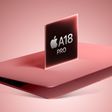Apple's Beats brand in March 2020 unveiled the Powerbeats, a lower-cost wired version of the Powerbeats Pro and an upgrade to the Powerbeats 3.
The new Powerbeats, which are technically the Powerbeats 4 but don't have the number at the end, are pretty much identical to the Powerbeats Pro in functionality but without the wire-free design.
Our Powerbeats guide has all of the details that you need to know about Apple's newest earbuds, which are ideal for use when working out.
Design and Fit
The Powerbeats are similar in design to the Powerbeats Pro, but with a cord that connects the two earbuds to one another.
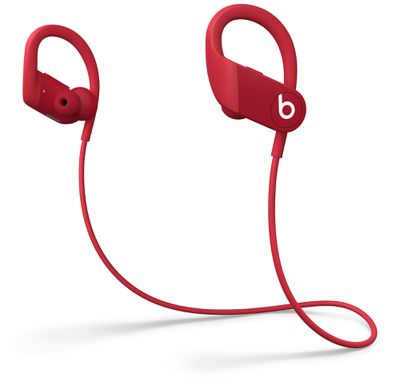
In prior versions of the Powerbeats, the cord trailed down from the side opposite the earhook, but in the new model, the cord attaches to the bottom of the earhook, which Apple says makes for a natural, ergonomic contour around the neck.
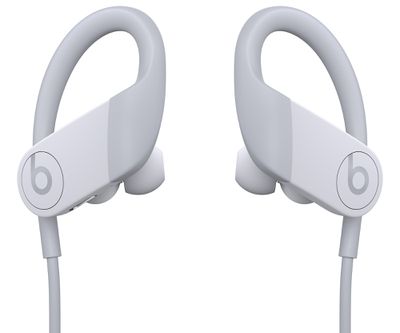
Like the Powerbeats Pro, the Powerbeats feature earhooks that fit over the ears to keep them in place during vigorous exercise. Apple provides ear tips in four sizes with the Powerbeats so each person can get the best possible fit.
While Powerbeats have silicon tips to create a tight fit in the ear that isolates sound, there is no noise cancellation technology.
Colors
Apple offers the Powerbeats in Black, Red, and White.
Physical Controls
There are physical playback controls on the Powerbeats that can be used for adjusting the volume, skipping songs, declining or accepting incoming calls, activating Siri, and playing and pausing music.
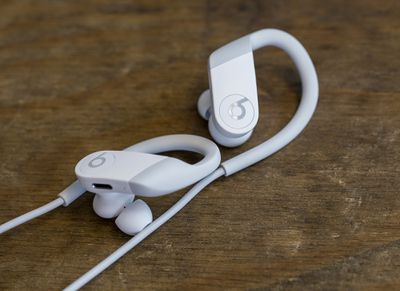
Volume is controlled by the rocker at the top of the Powerbeats, while other functions use the round button on the side that also features the "B" logo for Beats.
Sound Quality
Apple says that the Powerbeats deliver the same rich audio as the Powerbeats Pro with pistonic drivers that offer clean sound reproduction with low distortion across the frequency curve and enhanced clarity and "great dynamic range."
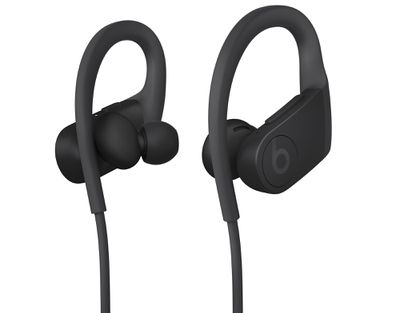
Phone Calls
There are two beam-forming microphones on each side that filter out external sound so incoming calls sound crisp and clear.
Sensors and H1 Chip
Powerbeats are equipped with the same H1 chip that's been included in all recent Apple earbud products, including the Powerbeats Pro, AirPods 2, and AirPods Pro.
The H1 chip allows for fast connections to Apple devices and quick switching between Apple devices that are using the same Apple ID.
The H1 chip also enables "Hey Siri" functionality, allowing for hands-free access to Siri.
Water Resistance Capabilities
Powerbeats have an IPX4 water resistance rating, which means they're certified to hold up to water splashing against the enclosure from any direction, but have the potential to fail when immersed or exposed to jets of water.
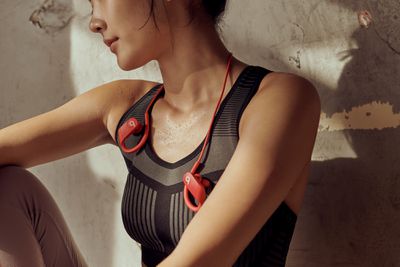
With an IPX4 rating, the Powerbeats should be able to survive sweat exposure, though heavy rain, immersion, and other liquid exposure should be avoided.
Connectivity
In addition to an H1 chip for "Hey Siri" support, fast device switching, and quick connections to devices, the Powerbeats support Class 1 Bluetooth technology for extended range and uninterrupted listening.
Battery Life
Powerbeats have a 15-hour battery life on a single charge (which is three hours longer than Powerbeats 3) and there's a 5-minute Fast Fuel feature that provides an hour of listening time after a five-minute charge.
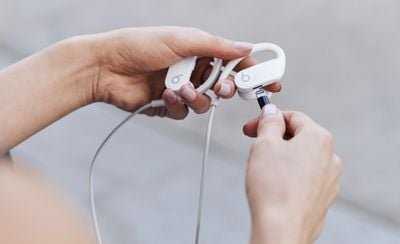
Powerbeats do not have a charging case and are charged using a Lightning cable through a Lightning port on the bottom of one of the earbuds.
Price
Powerbeats are priced at $149.95, which is $50 less than the Powerbeats 3 and $100 cheaper than the Powerbeats Pro.
How to Buy
Powerbeats can be purchased from the online Apple Store as of March 18.
Guide Feedback
Have questions about the Powerbeats or know of details we've left out? Let us know in the comments or Send us an email here.










